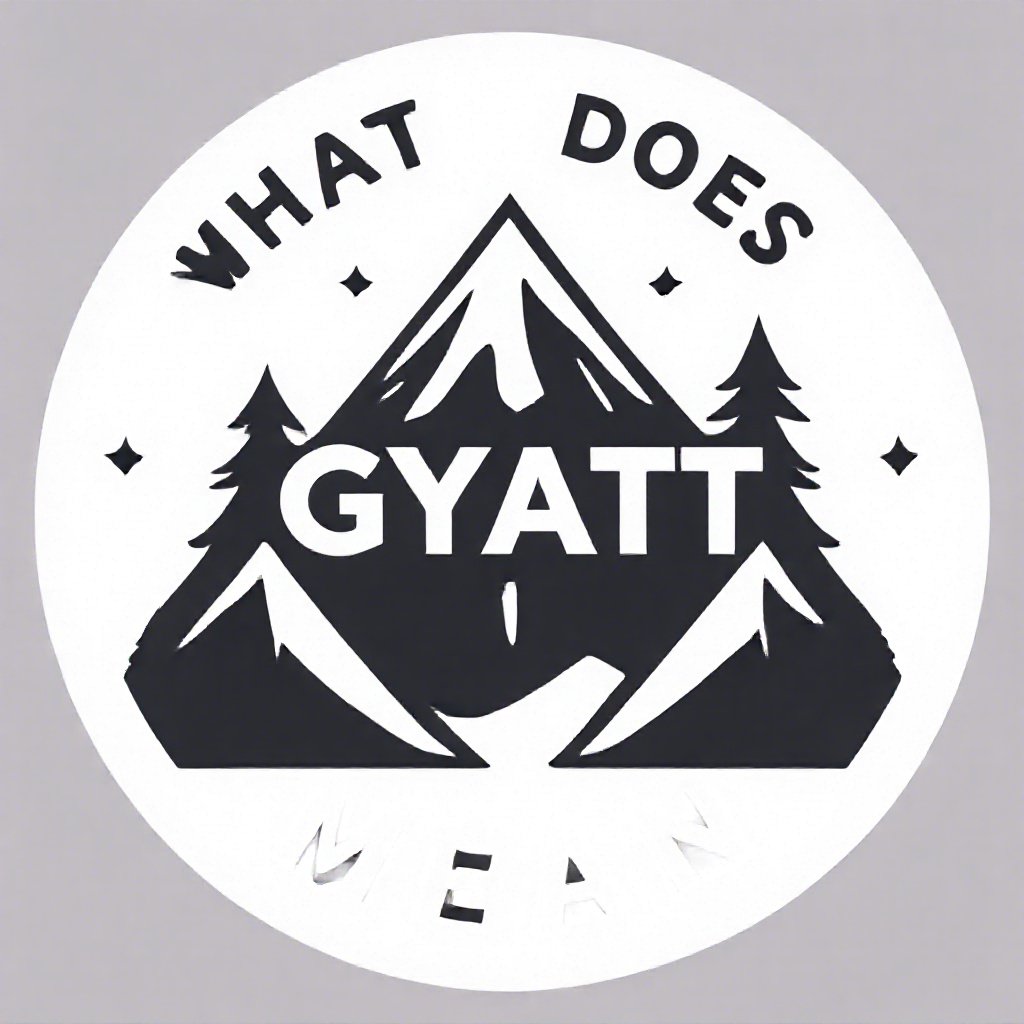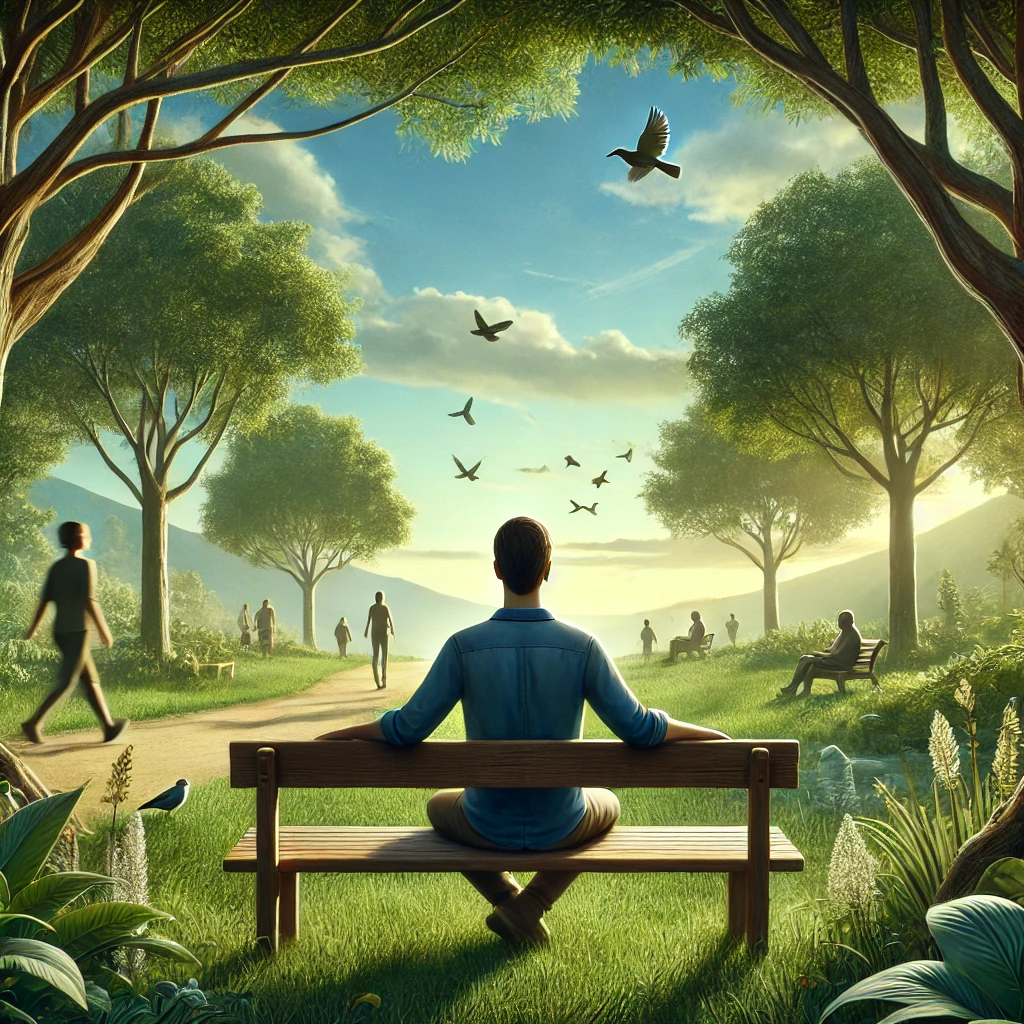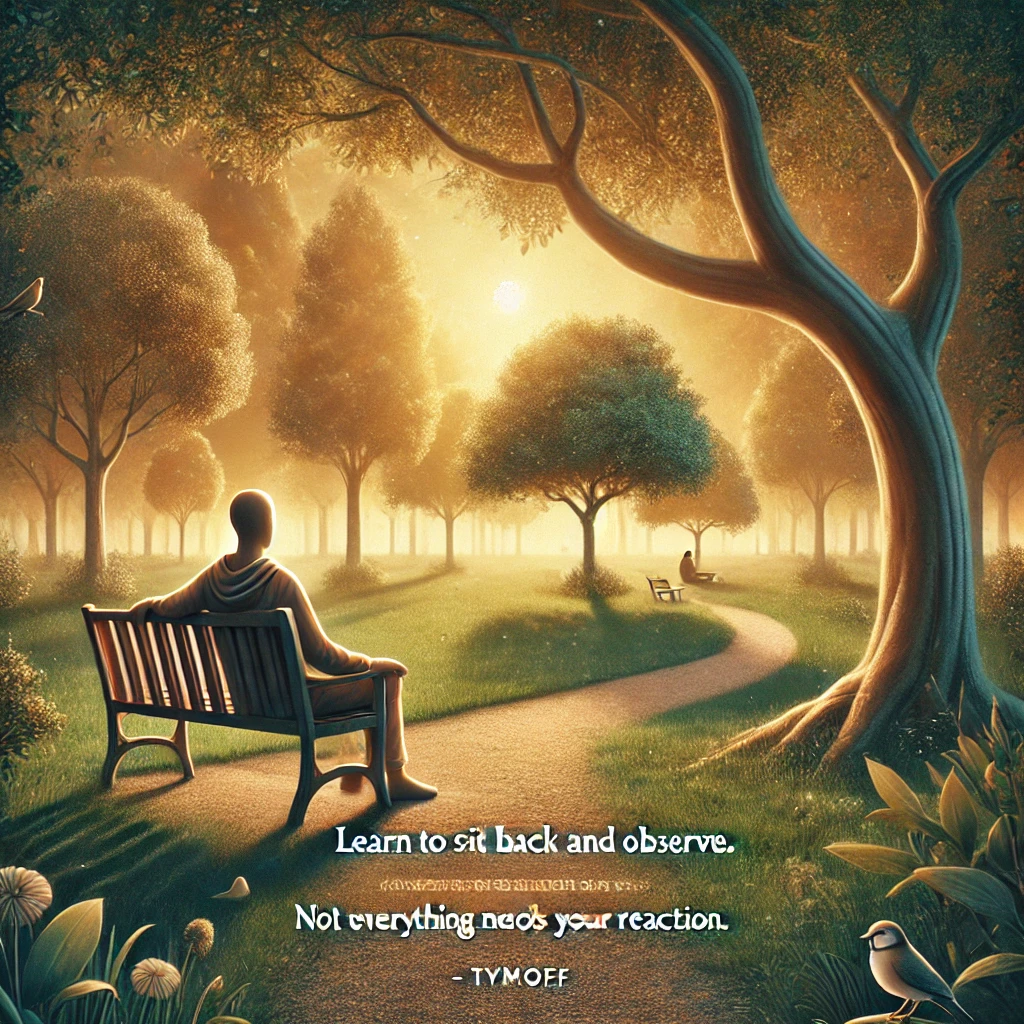In the modern fast-paced world, we are often driven to react immediately to every stimulus, whether in our personal lives, at work, or online. However, the philosophy embedded in “Learn to Sit Back and Observe. Not Everything Needs – Tymoff” encourages us to take a step back, reflect, and observe situations before jumping into action. This concept can significantly enhance our understanding of ourselves and the world around us, leading to better decision-making and more fulfilling relationships.
The Wisdom Behind Sitting Back and Observing
The core idea of sitting back and observing stems from the understanding that not everything requires an immediate reaction. This practice is not about inaction but about intentional observation, allowing us to process the situation and emotions involved before responding. By doing so, we can make more informed and mindful decisions.
In today’s world, where constant productivity and fast-paced responses are glorified, this wisdom is particularly important. It encourages us to resist the urge to act impulsively and instead cultivate patience and understanding, which ultimately leads to more meaningful and thoughtful engagement with the world(
MUST READ:The Importance of Insurance for Open House Events: A Case Study of Open House Perth
Benefits of Observation Over Immediate Action
- Improved Decision-Making
One of the primary benefits of observation is that it leads to better decision-making. When we take the time to observe, we can gather more information, see the situation from different perspectives, and make decisions that align with our values and long-term goals. This is especially important in personal relationships and professional environments, where hasty decisions can lead to misunderstandings or poor outcomes(Tymoffs). - Stress Reduction
Constantly feeling the need to react can be mentally and emotionally exhausting. Learning to sit back and observe allows us to manage our emotional responses better, reducing unnecessary stress and helping us conserve energy for the moments that truly matter. By practicing patience, we can also prevent the buildup of anxiety caused by always being “on” and ready to react(Disboard). - Enhanced Creativity and Problem-Solving
Observation fuels creativity. By paying attention to the world around us, we can notice patterns, details, and ideas that others might overlook. This heightened awareness allows for more innovative thinking, helping us to approach challenges from fresh perspectives. Creative professionals, in particular, benefit from this practice, as observation often sparks unique ideas that lead to breakthroughs(Oxford Magazines)(Tymoffs). - Strengthened Relationships
Observation also plays a crucial role in enhancing empathy and understanding in relationships. By taking the time to observe without jumping to conclusions, we can better understand the feelings, needs, and perspectives of others. This leads to more effective communication, deeper connections, and the ability to resolve conflicts more thoughtfully(Every Talkin)(Disboard).
The Role of Mindfulness in Observation
Sitting back and observing is closely related to the practice of mindfulness. Mindfulness teaches us to be fully present in the moment without judgment, allowing us to engage deeply with our surroundings. By incorporating mindfulness into our daily lives, we become more attuned to the nuances of life and can better appreciate the beauty in the small, everyday moments. This not only enriches our personal experiences but also allows us to navigate challenges with greater ease and a clearer mindset(
Balancing Action and Observation
While observation is a powerful tool, it’s important to remember that it does not mean we should avoid action altogether. There are times when immediate action is necessary, particularly in emergency situations or when time-sensitive opportunities arise. The key is to find a balance between observation and action—knowing when to step back and reflect and when to move forward decisively(
Tymoffs).
By honing this balance, we can become more adaptable and effective in both our personal and professional lives. This balance also prevents burnout, as we are no longer compelled to constantly react but can take thoughtful pauses when needed
Practical Tips for Practicing Observation
- Create Space for Reflection
Find moments throughout your day to pause and reflect. This can be as simple as taking a walk without distractions, spending time in nature, or practicing deep breathing to center your thoughts. - Start with Small Observations
Begin by observing everyday situations. Whether it’s a conversation or a meeting, take a moment to step back and notice the dynamics at play. Over time, you can extend this practice to more complex situations(Every Talkin)(tymoff). - Avoid Judgment
One of the key aspects of observation is refraining from immediate judgment. Instead of jumping to conclusions, try to see things from multiple angles. This helps cultivate empathy and reduces the likelihood of misunderstandings(Disboard).
Conclusion
In conclusion, learning to sit back and observe offers us a valuable way to navigate life’s complexities with greater wisdom and intentionality. By pausing before reacting, we gain perspective, reduce stress, enhance creativity, and build stronger relationships. This approach allows us to live more mindfully and make more meaningful choices that align with our true selves. In a world that constantly demands our attention and engagement, the art of observation is a skill worth mastering(
Every Talkin)(
Tymoffs).











Leave a Reply